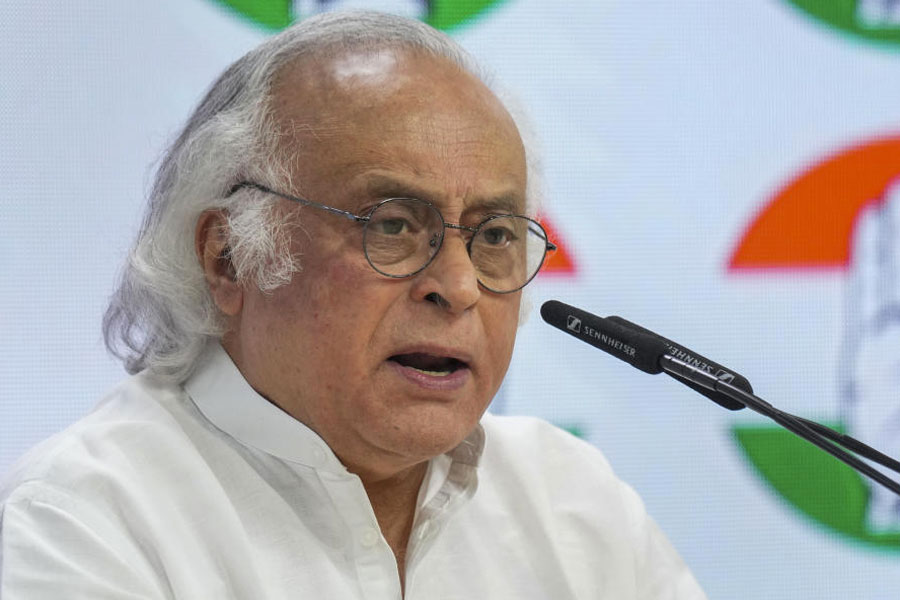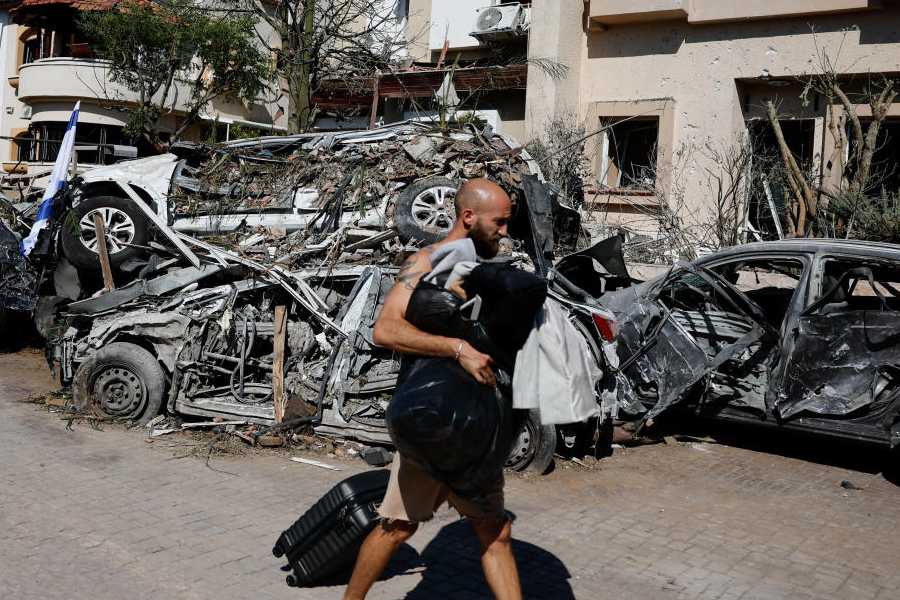 |
| Gayatri Devi’s funeral procession in Jaipur on Thursday. (Surendra Jai Paras) |
Jaipur, July 30: The pyre of one of India’s last true blue queens lit up here this evening, bringing the curtains down on a charmed era and shifting the focus on the vast property she leaves behind.
Rajmata Gayatri Devi, who died yesterday at 90, was accorded a state funeral at the royal cremation ground of Maharanio ki Chaatri on the road leading to Amer Fort, once the symbol of the might of the Jaipur kings.
Thousands of residents, among them VIPs like chief minister Ashok Gehlot, governor S.K. Singh and Maharaja Gaj Singh of Jodhpur, bid adieu to the Maharani.
But strangely, whispered many residents amid the gun salutes, the arrangements at the funeral site were not befitting of a queen.
The funeral wood was not sandalwood, neither was there any raised platform nor was any area cordoned off for the pyre that was lit by Gayatri Devi’s stepsons, Bhawani Singh, the present maharaja of Jaipur, and Jai Singh.
The focus has now shifted to the vast estate and property that Gayatri Devi leaves behind. Some estimates have pegged the total value of her property at upwards of Rs 1,000 crore, the jewel in the crown being the famed Rambagh Palace, now operated as a heritage hotel by the Taj group.
No one could say for sure if the Maharani had left behind a will. In the absence of one, her property will pass on to her legal heirs: grandson Devraj and granddaughter Lalitya, the children of her only son Jagat Singh, who died in 1997.
Sources said Gayatri Devi was the biggest stakeholder in Rambagh Palace Hotel Private Limited, the others being her stepsons Bhawani Singh, Prithiviraj Singh and Jai Singh.
Spread over 47 acres of verdant land, the palace, with its symmetrical design, airy verandahs and idyllic front lawns, was once the residence of Gayatri Devi and her husband, Maharaja Sawai Man Singh II.
The Rajmata had also constructed a bungalow, Lily Pool, on the Rambagh estate, complete with pools and lily gardens and a stud farm with at least 60 horses. When in Jaipur, she preferred to spend most of her time at Lily Pool. Also part of the estate is the 18-course Rambagh Golf Club.
Gayatri Devi also owned Moti Dungri, or Pearl Palace, built on the lines of a Scottish castle atop a hill.
The Maharani, who spent the summers in England, owned properties in Ascot — she enjoyed the races — and a town house in Mayfair. One of her London properties is a 65-room house built on 14 acres of land. She also has properties in the Bahamas and the Caribbean islands.
Back home, a disputed property is the Jai Mahal Palace, also run as a heritage hotel by the Taj group, which was bequeathed to son Jagat.
Jagat and his wife, Thai princess Priyanandana Rangsit, divorced in 1987. When Jagat died 10 years later, his children were still minors. A dispute arose in 2005 when the children, who had by then come of age, returned to India from Thailand to claim their share of the estate.
Thakur Heer Singh, part of Jaipur’s nobility, said the royal family had a treasure trove of jewels. According to Singh, Lloyds, insurers of the royal family’s jewellery, were once dazzled by a necklace with three rubies, each the size of a pigeon egg.
Lloyds then had to summon local jewellers to gauge the exact price of the necklace.
Heer Singh said under a contract between the Jaipur rulers and Emperor Akbar it had been agreed that the Mughals would get control of areas conquered by the Jaipur kings who could retain all the jewellery (shahi khazana) of the principality taken over. This accounts for a large chunk of the family’s wealth, Singh explained.











